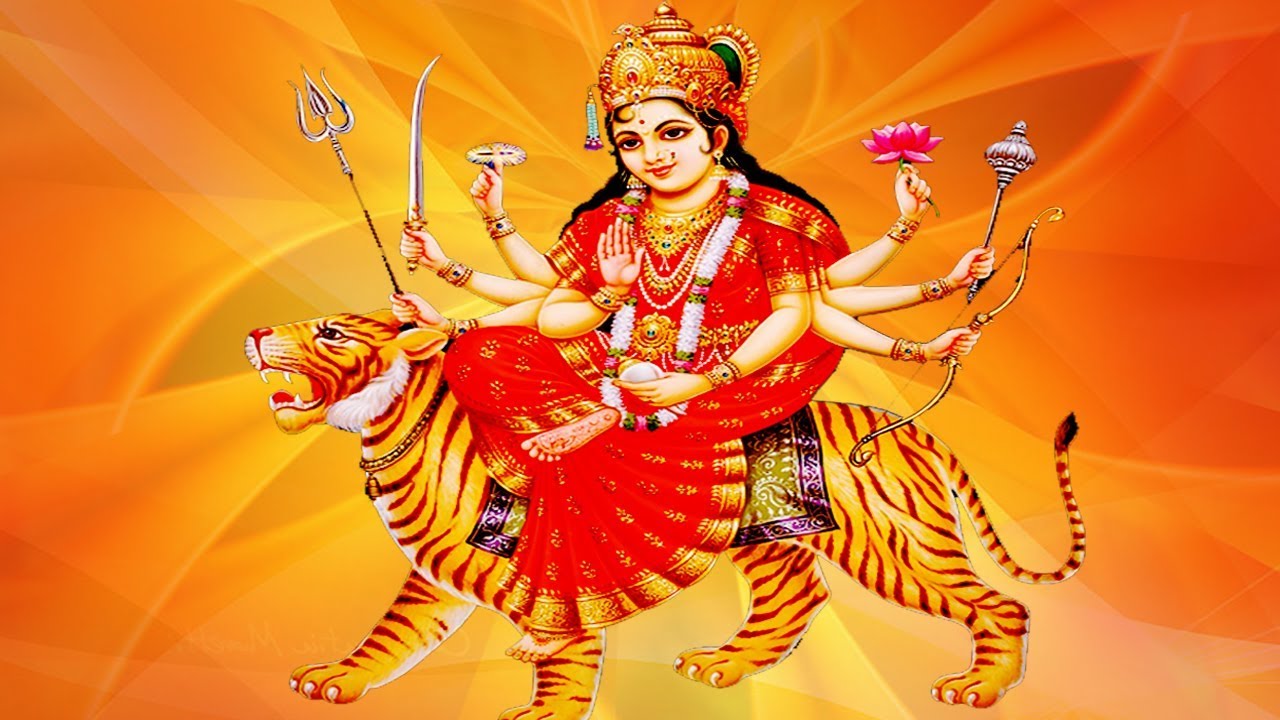
Durga, also known as Devi or Shakti, is a powerful and revered goddess in Hinduism. She is considered a form of the divine feminine energy and is often depicted as a warrior goddess who battles against the forces of evil. Durga is widely worshiped across India and is a central figure in many Hindu festivals.
Here are some key aspects of the goddess Durga:
- Iconography: Durga is typically depicted riding a lion or tiger, symbolizing power and courage. She is portrayed with multiple arms, each holding various weapons provided by different gods, emphasizing her strength and ability to combat evil. The weapons include a trident, sword, bow, arrow, discus, and conch shell.
- Defeating the Buffalo Demon (Mahishasura Mardini): One of the most famous stories associated with Durga is her victory over the buffalo demon Mahishasura. According to Hindu mythology, Mahishasura had received a boon that made him invincible against all male gods. In response, the combined energies of various gods created Durga, who then defeated Mahishasura in a fierce battle.
- Navaratri Festival: The festival of Navaratri, meaning “nine nights,” is dedicated to the worship of Durga. It typically occurs in the autumn and involves elaborate rituals, fasting, and the performance of traditional dances. The last day of Navaratri, known as Vijayadashami or Dussehra, celebrates the victory of Durga over Mahishasura.
- Forms of Durga: Durga is worshiped in various forms, each emphasizing different attributes. Some well-known forms include Parvati (gentle and nurturing), Kali (fierce and destructive), and Chamunda (associated with destruction).
- Shaktism: Durga is a central figure in Shaktism, a major tradition within Hinduism that focuses on the worship of the goddess as the ultimate, primordial source of energy (Shakti). In this context, she is often considered the Supreme Divine Mother.
- Durga Puja: Durga Puja is a significant festival dedicated to the worship of Durga, particularly in the eastern parts of India, such as West Bengal. It involves the creation of elaborately crafted idols of the goddess, cultural events, and community celebrations.
- Symbolism: Durga symbolizes the divine feminine force that protects and preserves cosmic order (dharma) by defeating the forces of chaos and evil. Her battles are seen as metaphors for the ongoing struggle between good and evil within individuals and in the world.
Durga is a multifaceted goddess embodying both fierce and nurturing aspects, and her worship is deeply ingrained in the cultural and religious traditions of Hinduism.
The universe that we see and experience is a bundle of energy, both packed and unpacked. This is the discovery of modem science, which incidentally, has demolished the distinction between matter and energy. According to it, there is one basic energy behind all forms of matter and energy. However, it seems to be still far off from discovering the relationship between matter on the one hand, and, mind and life on the other. Are they also, though apparently poles apart, manifestations of the same basic energy? Could it be that the same energy or matter, at one level of vibration is called ‘matter’, at another, ‘mind’ and yet another, ‘life’? Modem science or the modem scientists, devoting most of their attention to the manifest material universe may not even be prepared to concede this possibility! Hindu philosophy, based on the Vedanta and a group of works based on the Vedanta and more commonly known as the Tantras postulates exactly this! The source and sustenance of all creation, whether at the level of matter or life or mind, is one and one only. It is Sakti (energy). Brahman (the Absolute) of the Vedanta and Sakti or DeVI of the Tantras are identical. When that ‘energy’ is in a static condition, with neither evolution nor involution, when the universe to be created is not even in a seed-form as it were, it is called Brahman. When it starts evolving into this creation, sustains it and withdraws it back into itself, it is called Sakti. If Brahman is the coiled serpent in sleep, Sakti is the same serpent in motion. If Brahman is likened to the word, Sakti is its meaning. If Brahman is like fire, Sakti is its burning power. The two are inseparable: one in two and two mone.
In the Hindu mythological literature, as also in the Tantras, this energy is always pictured as a female deity, the Devl, as the consort of its counterpart male deity. Each member of the Trinity has his Sakti or DeVI as his consort: Sarasvatl of Brahma, Laksml of Visnu and Parvatl of Siva. However, the mother-cult that has evolved over the last few centuries, is predominantly centred round Parvatl, the consort of Siva.
Mother-worship and mother-cult are not alien to the Vedic religion as some suggest. The concept of Aditi, the mother of gods, personification of nature and the Ambhrnisukta as also the Ratrisukta of the Rgveda clearly contain the origins of mother-worship.
